"I could have gone on flying through space forever." -Yuri Gagarin
It was April 12th, 1961, or fifty years ago today, that Yuri Gagarin became the first human being to leave Earth -- the ground, the atmosphere, the stratosphere -- and to soar into outer space.
What was unimaginable just half-a-century ago has become an amazing journey full of accomplishments, setbacks, disasters and unmitigated triumphs.
And to recap some of our greatest achievements, I thought I'd make up a fun little ten-question quiz for you, with answers (and pictures) below! Ready?
- 1.) What type of rocket was it that launched Yuri on his historical flight in 1961?
- 2.) Who was the first American in space, and what was his famous prayer on the launchpad?
- 3.) Who was the first woman in space, and when did that happen?
- 4.) Who took the very first picture of the entire Earth from space, and when did that happen?
- 5.) Who was the "third man" on the Apollo 11 mission? You all know Neil and Buzz, but who was the man orbiting overhead, never to walk on the Moon?
- 6.) Who was the first American woman in space, and when did that happen?
- 7.) Who was the first person to hit on a celebrity from space? (Yes, we've done that, too!)
- 8.) Who holds the record for longest single trip (duration) in space?
- 9.) Who holds the record for farthest trip (in distance) away from the Earth?
- 10.) And finally... who was the first private astronaut -- without any government funding -- to go into space?
Ready for the answers?
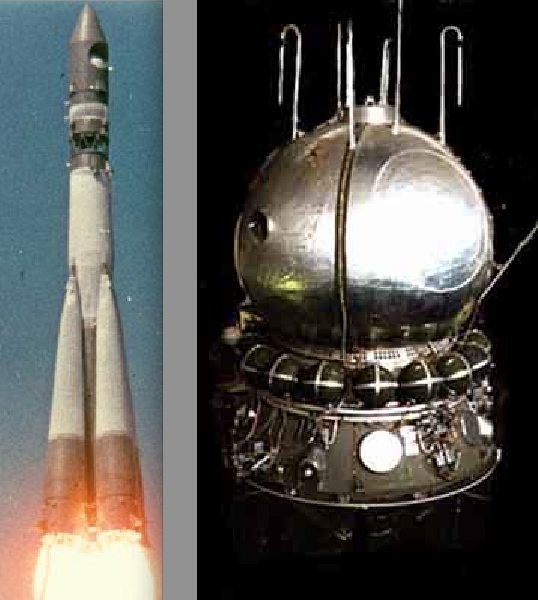
1.) Yuri was launched aboard a Vostok-K rocket, Vostok 1, and spent his time in the manned capsule shown to the right, Vostok-3Ka. There were a total of 13 launches of Vostok-K rockets, two of which failed, including the very first one in December of 1960. However, in rare happy news from space failures, both dogs on board survived.
2.) Just three weeks after Yuri Gagarin's flight, Alan Shepard became the first American in space on May 5th, 1961. Launched in his Mercury Redstone spacecraft nicknamed "Freedom 7," Shepard was heard uttering a unique prayer while on the launchpad, and although it's a minor misquote, it will forever be immortalized as Shepard's Prayer:
Dear Lord, please don't let me fuck up.
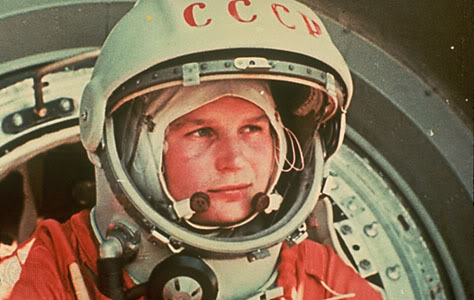
3.) The first woman in space? That would be the Soviet Union's Valentina Tereshkova, who first made it up there on June 16th, 1963. Unlike Gagarin and Shepard, Tereshkova's flight put her in orbit around the Earth forty-eight times over the span of three days, or for a longer amount of time than all the Americans to that point combined!
Her flight was the final Vostok flight, Vostok 6, and at one point it was only 5 kilometers away from Vostok 5, where she and Valery Bykovsky became the first astronauts aboard different vessels to communicate with one another.
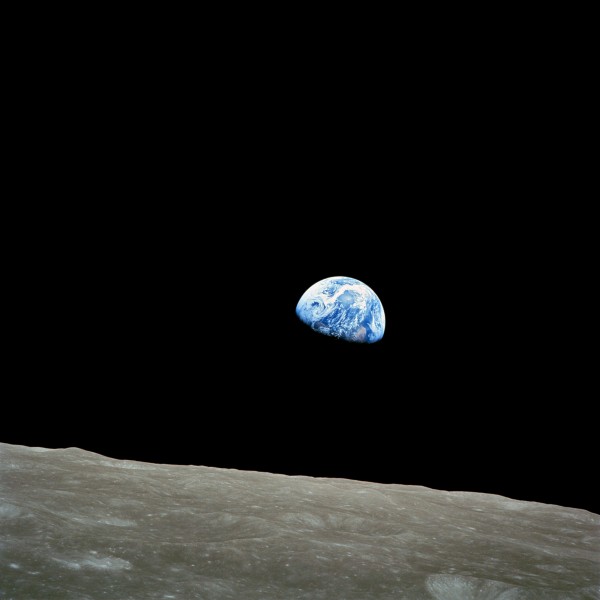
4.) The first picture of the entire Earth from space? Well, you need to get pretty far away to be able to photograph the entire Earth, and it wasn't until we started shooting for the Moon that we were able to capture it with a single snapshot. The very first human voyage to the Moon took place aboard the Apollo 8 mission. While technically Frank Borman took the first photo, his camera was black and white, and the image was not so impressive. But Bill Anders took the photo above, simply known today as Earthrise, taken on December 24th, 1968. His inspiring quote is one of my personal favorites:
We came all this way to explore the moon, and the most important thing is that we discovered the Earth.

5.) Who is that "third man" in the picture? While many will recognize Neil Armstrong (left) and Buzz Aldrin (right), just as essential to the success of Apollo 11 is astronaut Michael Collins, command module pilot for Apollo 11. Contrary to popular opinion that he was the loneliest man alive while orbiting the Moon by himself, while Neil and Buzz walked on the lunar surface below, Collins himself says,
This venture has been structured for three men, and I consider my third to be as necessary as either of the other two.
His autobiography, Carrying the Fire, is a wonderful read.
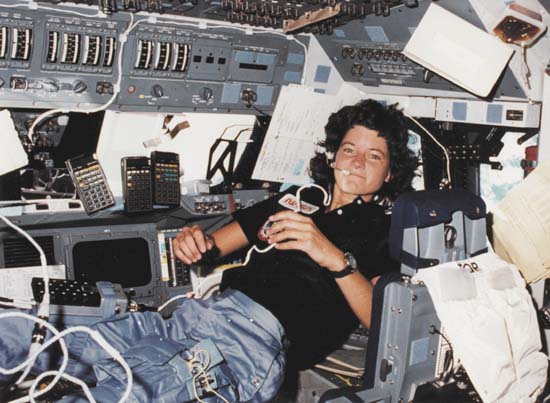
6.) The first American woman in space? Believe it or not, it took twenty years for the Americans to catch up to the Soviets in this regard. It wasn't until Sally Ride, above, flew aboard the seventh space shuttle mission, on the Space Shuttle Challenger (June 18th, 1983) that we put the first American woman in space. What has she been working on since? From this interview in 2008:
I kind of came out of my flight experience with a much greater appreciation for Earth's environment and our impact on it. And that evolved rather quickly actually into an interest and concern about climate change and global warming. Understanding our effect on Earth's climate and then mitigating our effect on Earth's climate is really the greatest challenge in front of us today, and in front of the next generation.
For those of you wondering, the Soviets didn't do much better in that regard; Ride was only the third woman in space overall. Who was second? Soviet cosmonaut Svetlana Savitskaya, who made it in 1982.
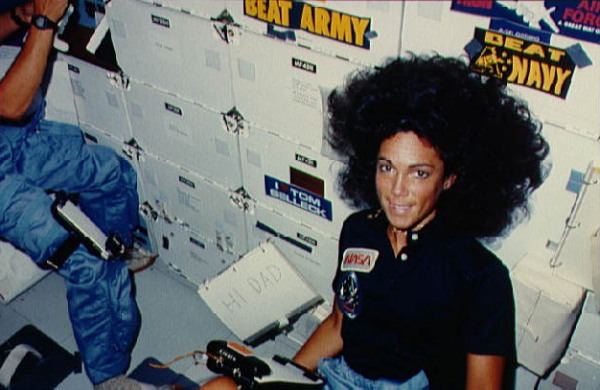
7.) The first astronaut to hit on a celebrity from space? The second American woman in space, Judy Resnik, who's also the first Jewish person in space, holds that distinction.
Who was the lucky celebrity? Look closely on the image above, and you can see a bumper sticker taped to her locker aboard the shuttle. "I ♥ Tom Selleck." Judy, sadly, was one of the seven astronauts killed in the 1986 Space Shuttle Challenger disaster.

Image credit: European Space Agency, with Polyakov, right, performing medical tests on Ulf Merbold aboard Mir.
8.) Who spent the longest in space? Russian cosmonaut Valeri Polyakov. From January 8th, 1994, to March 22nd, 1995, Polyakov spent a remarkable 437 consecutive days in space, on board the Mir space station.
Believe it or not, Polyakov also had an earlier mission to Mir, from August 1988 to April of 1989, where he logged 240 consecutive days in space. To date, he is the only human being two have experienced two separate stretches of over 200 days in space. (And for two separate countries, at that!)
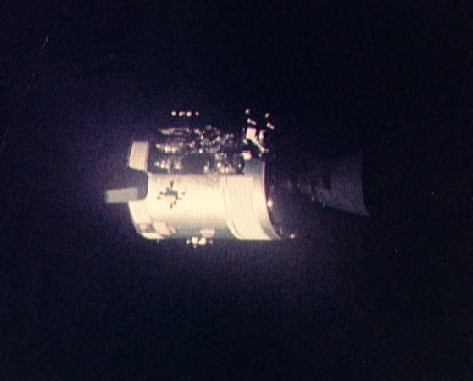
9.) Who were the humans who've been the farthest from the Earth? That would be the crew of Apollo 13, whose damaged Service Module -- photographed by the astronauts during the flight -- is shown above. Jim Lovell, Jack Swigert, and Fred Haise were forced to take a different trajectory around the Moon than all the other Apollo flights, and wound up at a higher altitude, swinging around the Moon, than all the other missions, by about 100 kilometers.
On April 15th, 1970, the crew achieved a distance of 400,171 km from Earth, the current record. At this distance, round-trip radio communication from Earth to the astronauts -- were the Moon not in the way -- would have had a 2.67 second delay. Why's that? Because the speed of light, 300,000 kilometers per second, would have taken that long to travel from the Earth to Apollo 13 and back.
10.) And finally, who was the first private astronaut? Mike Melvill, the 434th person in space, became the first person to do so without any government funding, as the pilot of SpaceShipOne's flight 15P. (He did it again as the pilot of flight 16P.) When did this flight take place? June 21st, 2004. And thus, the commercial astronaut was born.
And if you seriously can't get enough of all of this wonderful spaceflight history, have a look at the Bad Astronomer's thoughts, and you may also have to check out this video: First Orbit. (Thanks to Nancy at Universe Today for noticing this one.) It's a recreation of what Yuri Gagarin's first spaceflight may have been like, and you can experience the full 99-minute movie for yourself below. Enjoy!

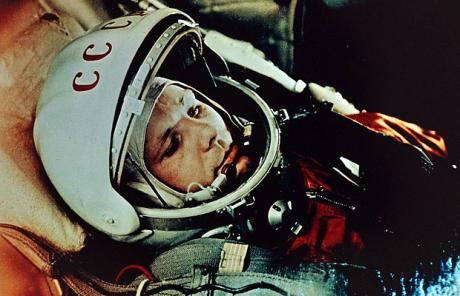
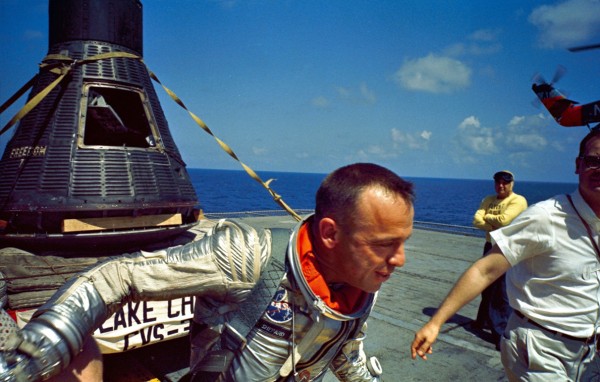
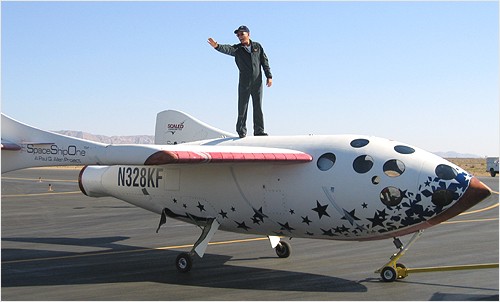
congradz!!!
The Vostok-K rocket is a variant of the venerable R7 -affectionately known as "semiyorka", little seven- which is both the very first launcher and in its current incarnation the longest used launcher, with an amazing safey record (the teething troubles have long since been solved).
The spherical capsule of Vostok and Voskhod was called "sharik" by the cosmonauts.
The very first R7 (used by Sputnik) had a maximum payload to LEO of ca. 1.3 tons.
With a small extra stage, the Vostok-K had a payload of 4.5 tons to LEO, much more than Atlas or Titan.
The current (Soyuz) launcher has a payload of 6.5 tons and has seen little change for 44 years.
The Soyuz spacecraft carried by the current version of R7 may be cramped and minimalist, but it works and has outlived all its American rivals at a fraction of the cost per mission.
--- --- --- --- ---
Several American women trained for becoming astronauts in the early 1960s, but the effort was halted by the misogynist views of the top brass of the era. Edward Teller actually advocated using woman astronauts as they weigh less and consume less oxygen than men.
--- --- --- --- ---
The launch of Apollo 8 was the first live coverage of a launch by Swedish television. I had followed the Apollo program closely since I was five and a half years old (on Christmas 1966 we got a book with a richly illustrated account of the planned Apollo mission) and the excitement of counting backwards to zero became part of Swedish culture, as it had already been for Americans. The Soviets never had live coverage, since they wanted to be able to cover up any failure.
Nice post, Ethan!
Go crazy humans! :)
Fransaâda kamuya açık alanda peçe yasaÄının uygulaması polisin yasaÄı protesto eden peçeli kadınları gözaltına almasıyla sorunlu olarak baÅlarken, aktivist Kenza Drider özgürlüÄünün kısıtlandıÄı gerekçesiyle AÄ°HMâde dava açıyor
Entire earth my ass. You mean half of it. :P
Nice summary Ethan.
I was wondering where the International Space Station fit in all of this.
I found the first Earth-Space Flute Duet in honor of Yuri!!
http://www.nasa.gov/multimedia/videogallery/index.html?media_id=79119001
"NASA Astronaut Cady Coleman, circling Earth aboard the International Space Station, and musician Ian Anderson, founder of the rock band Jethro Tull" play a flute duet in honor of Yuri Gagarin.
Yeah, I saw it all happen.
It was the Ruskies that got our behinds in gear and they were the reason we went to the moon in 69. Without competition, "behind dragging" is the natural course since there is no immediate financial return to pay for the high costs of beginning explorations.
I have been watching the first orbit movie (what a geekie Sat. night!) and have been fascinated by the conversation. It seems to be real and what struck me most was the concern for how Yuri was feeling. (Also not sure if that is a translation issue).
"I'm feeling well. Flight will continue"
"I am feeling good. I'm alert."
"Everything is normal. I'm continueing the flight. The weightlessness is OK."
I realize what a courageous pioneer he was!